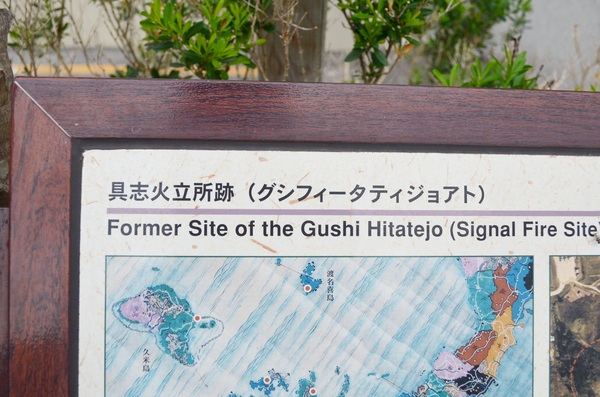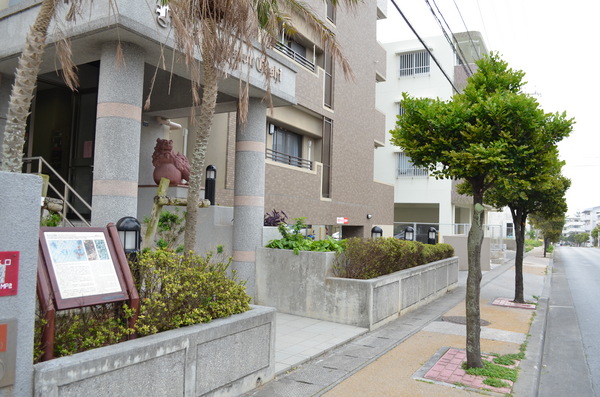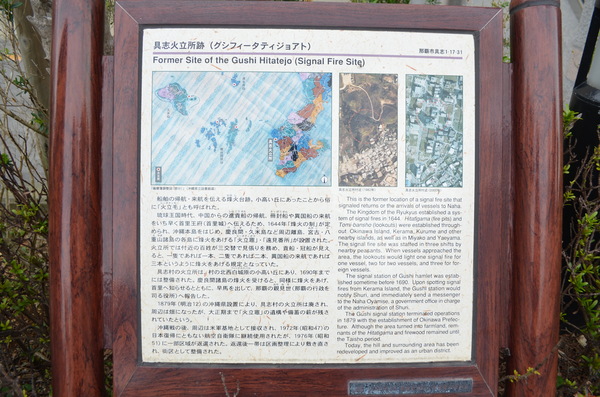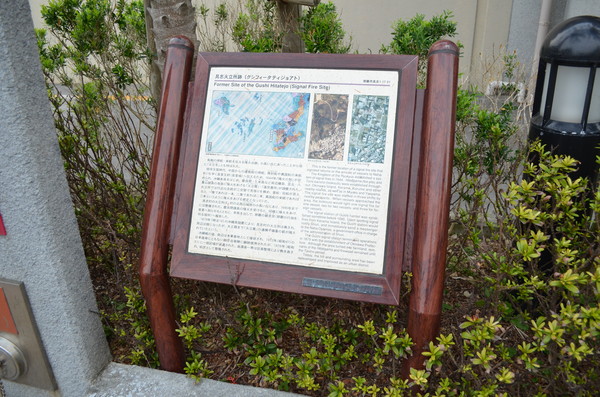Former Site of the Gushi Hitatejo (Signal Fire Site)
History





The remains of fire beacon stand to notify homeward voyage and, visit. It is located on top of a small hill, also known as “Hitatimou” (fire stand).
Basic information
- Address
- 901-0146 1-17-31 Gushi Naha Okinawa In front of the Lion's Mansion Gushi
- Business hours
- Nothing in particular
- Close day
- Nothing in particular
- Charge
- Free
- Parking
- None
- Access information
- 10 minutes from Naha airport by car.
Additional Information
- Academic information
- The remains of a fire beacon stand to notify homeward voyagers and visitors. It is located on top of a small hill, also known as "Hitatimou" (fire stand).
In 1644 of Ryukyu kingdom era, "Fire signal system" was built. The system was used to notify the official trading ship homeward and visitation of envoy ships from China, or visitation of other foreign ships, to Shuri royal government as soon as possible. "Hidati-gama"(fire signal furnace) was constructed and "Toomi-banjo" (far side watch house) on Okinawa's main island at first; then others were built on each of nearby isolated islands like Kerama and Kume island, followed by Miyako-Yaeyama islands. The fire stand/watch house staff were farmers from the local areas; they worked with three shifts, when the trading ship or, fleet appeared they raised the fire signals. The rule of fire signals was the following: the number of fire signals and numbers of ships were equal, for example: one fire signal for one ship appeared, two fire signals for two ships appeared. The fire stand of Gushi village was on small hill which located in firigusuku-baru, it was north west side of the village and built by 1690. When noticed the fire signal from Kerama islands, they showed the signals same as Kerama and notified to Shuri and Oyamise (Naha government office) by post-horse. When Okinawa prefecture established in 1879 (the 12th year of Meiji era), Gushi village fire stand was closed and it turned to farmland. However, fire stand frame and reserved fire wood were left until Taisho era.
After the Battle of Okinawa, the site was requisitioned for U.S. military bases; in 1972 when Okinawa was returned to Japan, the site was used by the Air Self-Defense Force. In 1976 (the 51st year of Showa era), thesite was partially restored. After the restoration, the land was readjusted and is maintained as part of the town. - Quote
- Naha City Museum of History
